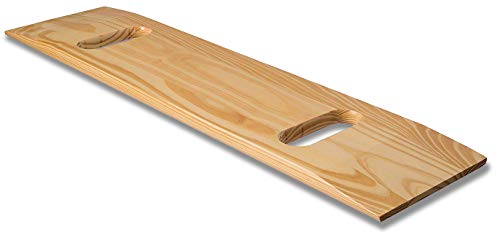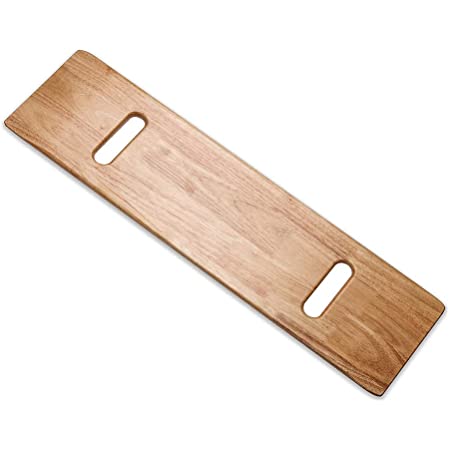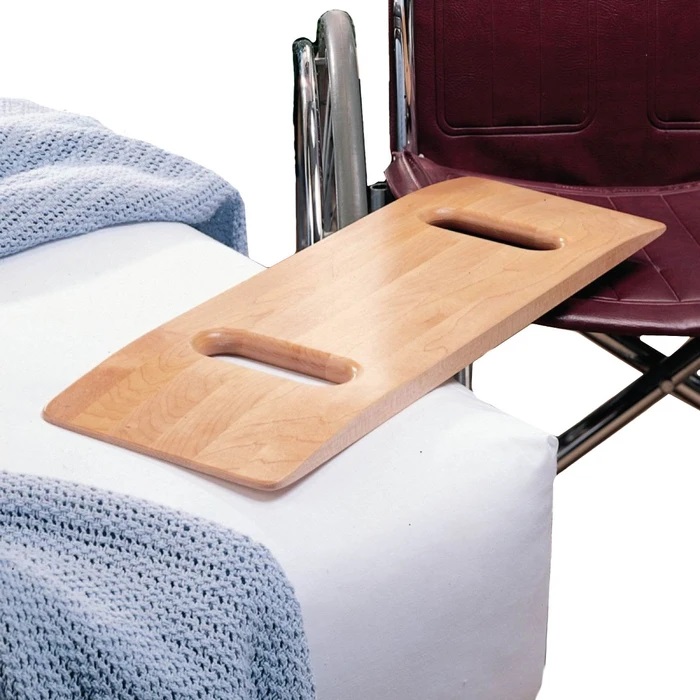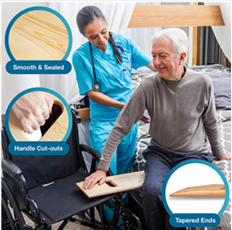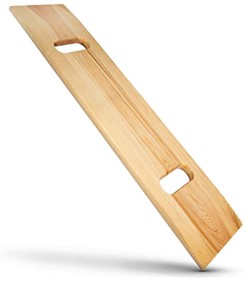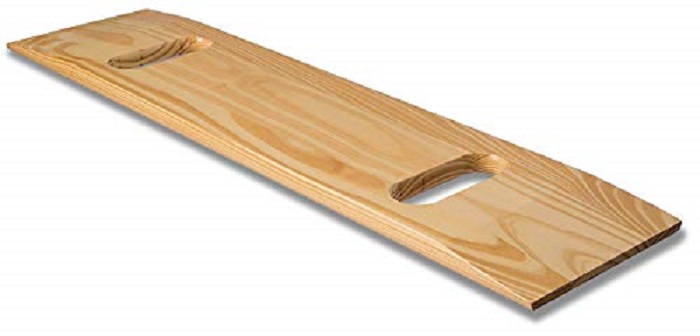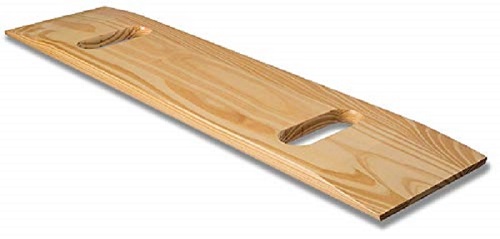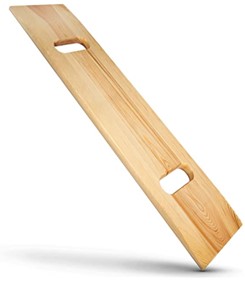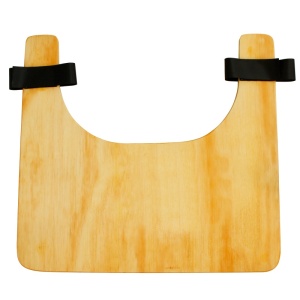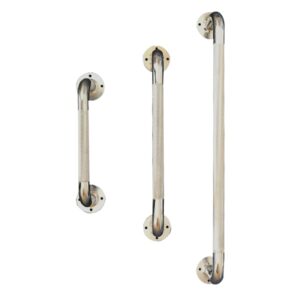Transfer Board Heavy Duty tapered at ends with a downward slope helps to assist with slide transfer.
It can hold up to 200kg weight capacity.
Transfer boards are ideal for Wheelchair users
Features Transfer Board
Tapered ends
Lightweight
Smooth finish for easy sliding overboard
76.2×20.3x2cm
1.3kg
Specifications: Transfer Board Heavy Duty
TRANSFER BOARD IS AN ESSENTIAL TOOL for caregivers to transfer patients
allowing easy and safely them to move with independence while protecting caregivers from injury.
SLIDE BOARD PROVIDES EASY, SAFE AND SECURE TRANSFERS to assist a move from a wheelchair, bed, chair, sofa, commode
or any sitting position. Ideal for disabled, wheelchair-bound, elderly or post-surgery.
SLIDING BOARD CUTOUT HANDLES offer extra leverage with a safe and secure grip.
Each handle has been rounded, sanded, and sealed for comfort.
THICK, SANDED, AND SEALED WOOD TRANSFER BOARDS ensure easy frictionless transfers.
Each durable board has tapered ends sanded and sealed with a smooth surface coating to prevent cracks,
chips, or snagged clothing.
SLIDE BOARD FOR TRANSFERS PRODUCT SPECIFICATIONS:
Made of Scotch Pine. Overall dimensions are 78 x3 x23cm
It holds up to 200Kgs with 2 Cut out Handles
Weight1.3kg
Tips for a successful transfer with a Transfer Board
These tips can help you do transfers more safely and efficiently:
If your healthcare provider advises using a transfer board,
always use it with a gait or belt during transfers.
Keep it within easy reach. Never substitute another object if the transfer board is not nearby.
Move slowly and carefully. Pay close attention to your movements and the location of your body parts as you
transfer across the board.
Transfer between surfaces of similar height.
Or move to a slightly lower surface.
Aids in reducing work for you and your caregiver.
Protect your skin. It means keeping your skin from getting pinched or rubbed during the transfer.
For instance, don’t drag your buttocks on the board.
And always wear clothing or use a transfer sheet.
Keep your body parts in the correct position. Keep your feet flat on the floor throughout most types of transfers.
Stop as needed as you move across the board and reposition your legs and feet.
To transfer from bench to wheelchair, do this one leg at a time, keeping each foot aligned with the knee.
To prevent stress on the wrist or overstretching your hand while moving, try making your hands into fists.
Support your body weight on the flat surface between the knuckles.
When transferring, never put your hands or fingers under the board.
Always wear sturdy shoes when possible. If you have decreased strength or sensation in your upper body,
work with a caregiver to help you transfer. As you grow more comfortable using a transfer board,
you may learn to use the transfer board without a caregiver.
